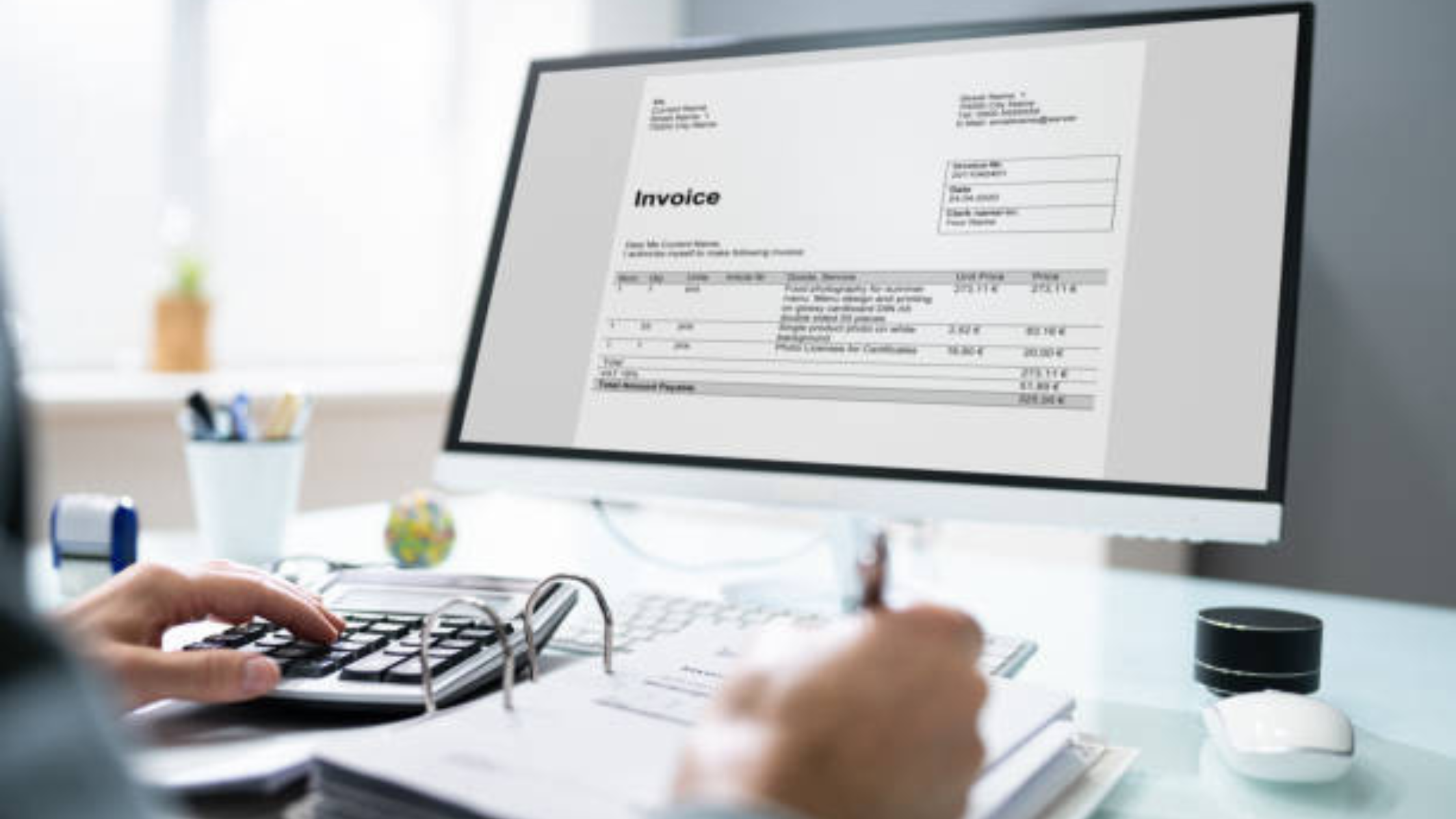Streamline Your Business with Restaurant Receipts

In the fast-paced world of business management, efficiency is key to success. One often-overlooked aspect where efficiency can be easily improved is in managing restaurant receipts. Streamlining your business with restaurant receipts not only saves time but also reduces errors and provides valuable insights into your expenses. By implementing organized systems for collecting, organizing, and analyzing receipts, businesses can better track spending, identify trends, and make informed decisions. This introduction explores the importance of optimizing your receipt management process, showcasing how it can positively impact your overall business operations.
Efficient receipt management is not just about saving time; it's also about accuracy and financial control. By maintaining a systematic approach to handling receipts, businesses can mitigate the risk of errors and discrepancies in financial records. Furthermore, a well-organized receipt management system enables businesses to quickly access necessary information for audits, budget planning, and financial analysis. This proactive approach to managing receipts not only enhances operational efficiency but also contributes to the overall financial health of the organization.
In addition to operational benefits, optimizing receipt management can also lead to improved decision-making. By having accurate and up-to-date information on expenses, businesses can identify areas of overspending, evaluate the performance of different cost centers, and make strategic adjustments to improve profitability. Beyond the immediate impact on financials, effective receipt management fosters a culture of accountability and transparency within the organization, promoting responsible spending practices and sound financial management.
Prioritizing the optimization of your receipt management process is a strategic investment that yields significant returns in terms of efficiency, accuracy, and decision-making capabilities. By implementing best practices in receipt collection, organization, and analysis, businesses can streamline their operations, enhance financial control, and drive sustainable growth. Embracing the value of efficient receipt management is not just about managing paperwork; it's about empowering your business with the insights and tools needed to thrive in a competitive market landscape.
Exploring the Benefits of Generating Restaurant Receipts
In the dynamic and fast-paced environment of the restaurant industry, the significance of generating restaurant receipts cannot be overstated. These seemingly simple pieces of paper hold immense value in enhancing various aspects of a restaurant's operations and customer interactions. Let's delve deeper into the multifaceted benefits that stem from the practice of creating detailed receipts.
First and foremost, one of the primary advantages of generating restaurant receipts lies in its role in maintaining accurate records and tracking essential business metrics. By documenting every order and transaction, receipts provide a comprehensive overview of the restaurant's financial activities. This meticulous record-keeping is crucial for tracking sales trends, monitoring inventory levels, and evaluating the overall financial health of the establishment.
Moreover, beyond mere documentation, restaurant receipts serve as powerful tools for streamlining accounting processes and ensuring financial transparency. Detailed receipts with itemized breakdowns simplify the task of reconciling financial data, making it easier for restaurant owners and managers to track expenses, analyze revenue streams, and identify areas for cost optimization. This level of financial clarity is instrumental in making informed business decisions and maintaining fiscal responsibility.
In addition to their operational and financial benefits, restaurant receipts also play a pivotal role in enhancing the customer experience. When customers receive well-crafted and detailed receipts, it not only serves as proof of their purchase but also reflects the restaurant's commitment to professionalism and service excellence. Clear and itemized receipts instill confidence in patrons, demonstrating transparency and attention to detail in every transaction.
Furthermore, the practice of generating receipts contributes to building customer trust and loyalty. By providing customers with accurate and informative receipts, restaurants demonstrate their dedication to customer satisfaction and open communication. This positive interaction not only fosters repeat business but also encourages positive word-of-mouth referrals, ultimately contributing to the restaurant's reputation and success.
The benefits of generating restaurant receipts extend far beyond their basic function. These receipts are integral components of a restaurant's operational efficiency, financial integrity, and customer-centric approach. By embracing the practice of creating detailed receipts, restaurants can elevate their service standards, improve financial management, and cultivate lasting relationships with their valued customers.
Effective Restaurant Receipts: Enhancing the Dining Experience
Effective restaurant receipts play a crucial role in enhancing the overall dining experience for customers. They serve as more than just proof of transaction; they are a reflection of the restaurant's professionalism and attention to detail. Here are key features that contribute to making restaurant receipts effective:.
Accuracy : One of the most essential features of a good receipt is accuracy. It should detail all items ordered, their prices, any applicable taxes, and the total amount due. This not only helps in providing transparency in billing but also ensures that customers can easily verify the charges.
Clear Formatting : A well-organized layout and clear formatting are vital for easy readability. Receipts should be structured in a logical manner, making it effortless for customers to identify different sections such as items, prices, and totals. This clarity reduces any confusion and enhances the overall user experience.
Branding Elements : Incorporating branding elements such as the restaurant's logo, name, or slogan adds a professional touch to the receipt. These elements not only reinforce the restaurant's image but also help in building brand recognition among customers.
Personalization : Offering options for including personalized messages or promotions on the receipt can create a more personalized experience for customers. This could include thanking the customer for their visit, providing a discount on their next meal, or inviting them to participate in a feedback survey. Such personalization fosters customer engagement and loyalty.
By ensuring that restaurant receipts exhibit these key features, establishments can not only streamline their billing process but also leave a lasting impression on customers. Effective receipts contribute to customer satisfaction, brand loyalty, and the overall success of the restaurant.
Additional Order Details
In addition to the mentioned features, another crucial aspect of effective restaurant receipts is the inclusion of important order details. Apart from listing the items ordered, a good receipt should also provide information on the date and time of the visit, the server's name, and any special requests or modifications made by the customer. These details not only serve as a record of the transaction but also enhance the customer's perception of personalized service.
Marketing Opportunities
Moreover, a well-designed receipt can act as a marketing tool. By strategically placing promotional offers or discounts on the receipt, restaurants can encourage repeat visits and increase customer loyalty. Including a QR code that leads to the restaurant's website or social media pages can further engage tech-savvy customers and drive online interactions.
Digital Receipts
Furthermore, digital receipts have become increasingly popular due to their convenience and eco-friendly nature. Restaurants can offer customers the option to receive receipts via email or text message, reducing paper waste and providing a modern touch to the dining experience.
Overall, effective restaurant receipts go beyond just documenting a transaction; they are a reflection of the restaurant's commitment to customer satisfaction, brand identity, and sustainability. By incorporating accurate details, clear formatting, branding elements, personalization, order specifics, and marketing opportunities, restaurants can elevate the dining experience and build long-lasting relationships with their patrons.
Importance of Efficient Restaurant Receipt Generation
Efficiency plays a critical role in providing exceptional customer service and optimizing business operations. One key aspect that significantly contributes to operational efficiency is the generation of restaurant receipts. When selecting a modern Point of Sale (POS) system tailored for efficient receipt generation, several essential features should be considered.
Automation for Swift Processing
First and foremost, automation is paramount for swift and accurate receipt generation. A POS system that automates the receipt process not only saves time but also minimizes errors, ensuring that transactions are processed seamlessly and efficiently.
Cloud-Based Storage for Easy Access
Moreover, opting for a cloud-based storage solution for receipts offers the advantage of easy access and retrieval. Cloud storage enables restaurant owners and staff to retrieve receipts quickly, even remotely, facilitating better record-keeping and enhancing overall organizational efficiency.
Customization for Branding
Furthermore, customization options are crucial for branding purposes. The ability to customize receipts with the restaurant's logo, colors, and personalized messages not only adds a professional touch but also helps reinforce brand identity. By incorporating branding elements into receipts, restaurants can enhance the overall customer experience, leaving a memorable impression on diners.
By leveraging receipt generation tools and software, restaurants can streamline their operations, reduce errors, and ultimately improve their efficiency. Customizing receipts not only adds a personal touch but also serves as a branding opportunity that can set a restaurant apart from its competitors.
The efficient generation of restaurant receipts is a vital aspect of running a successful dining establishment. By investing in a modern POS system with automation, cloud-based storage, and customization capabilities, businesses can enhance their operations, strengthen their brand identity, and ensure a positive customer experience.
When it comes to choosing a POS system for receipt generation, it's essential to delve deeper into the specifics that can truly make a difference in your restaurant's daily operations. One crucial feature to consider is the integration capability of the POS system with other restaurant management tools. Seamless integration can streamline processes further by synchronizing sales data, inventory levels, and customer information, providing a comprehensive view of your restaurant's performance.
Additionally, security measures should not be overlooked when selecting a POS system for receipt generation. Data security is paramount in today's digital landscape, and a robust POS system should offer encryption protocols and secure data storage to protect sensitive customer information and transaction records.
Furthermore, scalability is another factor to bear in mind. As your restaurant grows, so should your POS system's capacity to handle increased transaction volumes and data storage requirements. Choosing a scalable solution ensures that your receipt generation process remains efficient and effective even as your business expands.
Lastly, ongoing support and updates from the POS system provider are crucial for uninterrupted operations. Opt for a provider that offers reliable customer support, regular system updates, and training resources to maximize the benefits of your POS system and address any issues promptly.
By carefully considering these additional factors alongside the core features of automation, cloud-based storage, and customization, restaurant owners can make informed decisions when selecting a POS system for efficient receipt generation.
Best Practices for Managing Restaurant Receipts
In the fast-paced environment of a restaurant, managing receipts effectively is crucial for maintaining financial accuracy and organization. Implementing best practices for handling receipts can streamline accounting processes, improve record-keeping, and ensure compliance with regulations. In this blog section, we will discuss three key practices that can help restaurants better manage their receipts.
Implementing a Systematic Filing System
To avoid the chaos of misplaced receipts, it is essential to establish a systematic filing system. Organizing receipts by date, type of expense, or vendor can make it easier to locate specific receipts when needed. Utilizing digital receipt management tools or software can also simplify the process and reduce the risk of losing paper receipts. Moreover, categorizing receipts based on tax-deductible expenses versus non-deductible ones can aid in tax preparation and financial planning.
Regularly Auditing Receipts for Accuracy
Regular auditing of receipts is necessary to identify any discrepancies or errors in financial records. By cross-referencing receipts with bank statements and sales reports, restaurant owners can ensure that all transactions are accounted for accurately. This practice not only helps in detecting potential fraud but also promotes financial transparency within the business. Additionally, leveraging accounting software that automates receipt matching with bank transactions can further streamline the auditing process and provide real-time insights into financial health.
Training Staff on Proper Receipt Handling
Educating staff members on the importance of proper receipt handling is essential for maintaining consistency in record-keeping. Providing training on how to collect, store, and submit receipts can prevent misunderstandings and ensure that all necessary documentation is captured. By involving employees in the receipt management process, restaurants can promote accountability and accuracy in financial reporting. Furthermore, implementing periodic refresher training sessions on receipt management practices can keep the staff up-to-date with any changes in procedures or regulations.
By incorporating these best practices into their operations, restaurants can establish a solid foundation for managing receipts efficiently. Consistent adherence to these practices can lead to improved financial visibility, reduced errors, and enhanced compliance with accounting standards. Embracing technology solutions tailored for receipt management can further enhance operational efficiency and provide valuable insights for informed decision-making.
Conclusion
Leveraging restaurant receipts can significantly streamline business operations, improve financial tracking, and enhance customer service. By integrating digital receipt solutions and implementing efficient record-keeping practices, businesses can optimize their processes, reduce errors, and ultimately boost their bottom line. Embracing technology in receipt management is not just a trend but a necessity in today's fast-paced business landscape. By understanding the importance of restaurant receipts and utilizing them effectively, businesses can position themselves for success in the competitive market.







